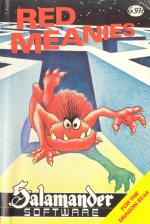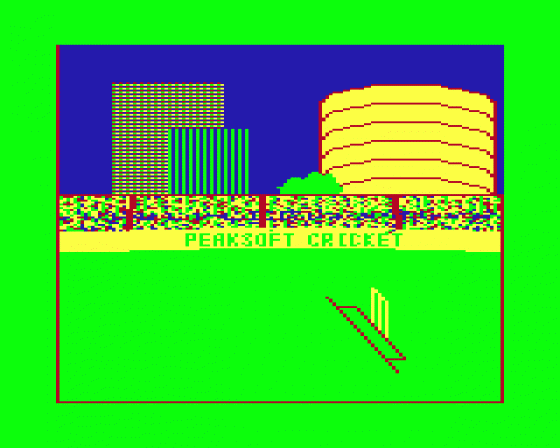
Dragon User
 1st August 1984
1st August 1984
Author: John Scriven
Publisher: Salamander
Machine: Dragon 32/64
Published in Dragon User #016
Intergalactic cheese-snufffers, terrorising pterodactyls and the evil Seiddab empire are no match for our man at the controls, John Scriven
Introduction
This month I've concentrated on games, some from familiar names and some from fresh companies. I've also had a chat with Cuthbert, won a gold medal in the decathlon at the Olympics, bowled out Ian Botham and Kapil Dev in the same match, pushed ice blocks round the Antarctic and avoided playing Invaders - in fact, a very pleasant month.
Buzzard Bait (Tom Mix)
A frequent name on the credits screen at the start of many excellent games is that of Tom Mix, Now the American company has decided it should have an English outlet, rather than licence other companies to market its programs. The first opus from this new company, Buzzard Bait, is up to the standard of previous titles and contains several interesting features, the most noticeable of these is probably the plastic object on the end of a cable that you find in the box next to the cassette. This strange item is a "dongle", designed to prevent piracy of the game.
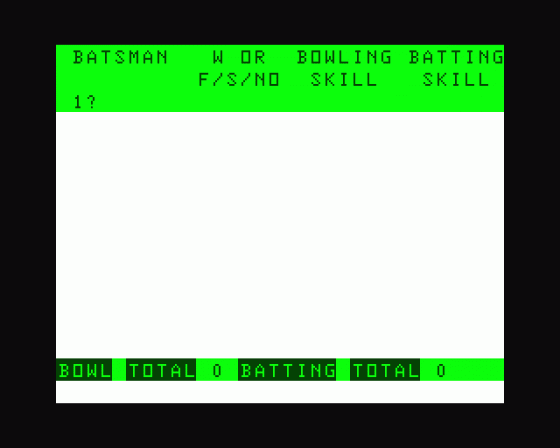
Although not uncommon in the field of business software, it's the first time that I've encountered one on a piece of home software. Dongles for the Apple computer usually consist of small attachments that fit on a board inside the computer and have a selection of micro-switches that can be set to an entry code. If the dongle is absent, or the switches incorrectly set, not only will the software fail to load, it will sometimes also corrupt the disk.
It has been calculated that millions of pounds are lost each year by software firms due to people copying each other's software. While backup copying for one's own use is perfectly legitimate, issuing your friends with odd copies is not. If the situation had stopped there, then probably program writers would have put up with it; unfortunately, there is now a thriving black market of software rip-offs, that can be seen in many market stalls round the country. What also disturbed manufacturers was the fact that so-called computer clubs had been set up solely with the aim of supplying members with cheap copies of popular games.
There is little physically that can be done to a cassette to prevent it being copied tape-to-tape, even if the program is difficult to break into. The one idea that worked well this year was snatched away by the Ministry of Defence. Some companies record the program at a very low level, but often this merely frustrates the efforts of the owners to load the original tape. If you make a copy of software that has been "dongled", then you won't be able to use it unless a dongle is attached to your machine.
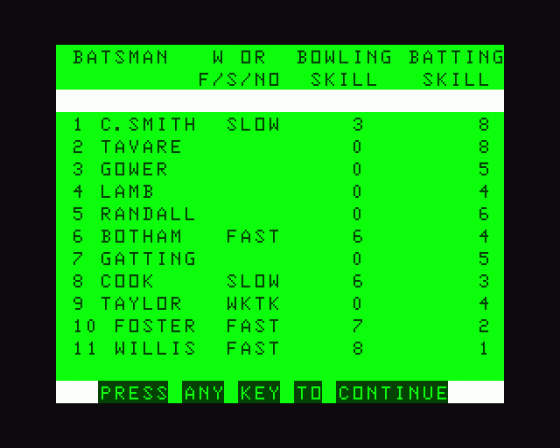
Buzzard Bait's dongle consists of a small black box containing a lump of thick resin. Somewhere inside this resin lies a little board developed by a Newcastle firm. The details of the board are secret, but even if you found out what it contained, it would probably be easier to go out and buy your own copy of the game than to try and duplicate it!
Has all this trouble been worthwhile? When the game has loaded and you swap the dongle for a joystick, you are offered the chance to select the background colour, and then the screen clears to reveal the playing area. This consists of several islands suspended in the air. Your player rides on the back of a bird about the size of an ostrich.
Using a joystick to control left and right movement and the fire button to flap the wings, your aim is to attack other riders on the screen. If your lance is higher than your opponent's, then they are destroyed. If you manage to get yourself killed, then you are reincarnated on one of the islands (provided you still have one of your five lives remaining). When an enemy is destroyed, the rider is transformed into an egg that must also be destroyed before it hatches into a new rider. Managing to clear the screen results in a fresh wave appearing and more bits of the islands crumbling away. It you spend too long on any particular wave, pterodactyls zoom in from left and right, and they are particularly difficult to destroy. From the fourth wave onwards, the land at the bottom of the screen gives way to a lake of lava inhabited by a lava monster who will grab any bird that flies too close.
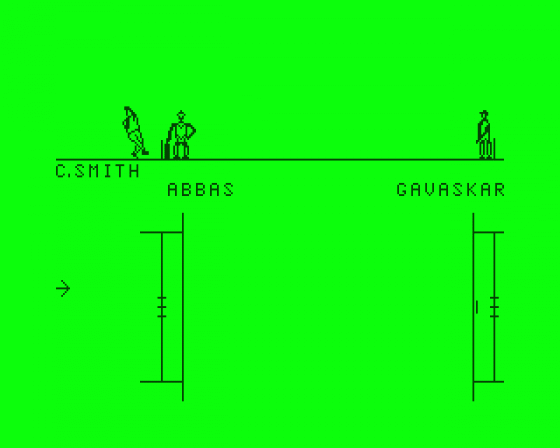
Although this game is great fun to play singly, it is even better with two players. Whereas most two-player games merely allow you to take it in turns, this game lets both of you appear on the screen at the same time. In this mode, each player controls a rider of a different colour, and you can pit yourselves against the enemy as a team. Indeed, you will get cooperation points if you choose to play this way.
For those readers possessing a mean nature, there's nothing to stop you jumping on your friend when he/she least expects it, although I found I often did this by mistake rather than by design (that's my excuse, anyway!). If you like the arcade game Joust, or want something different from standard space games, then you will find this good value and great fun, dongle and all.
Electron (Tom Mix)
Another game from Tom Mix is Electron. This could be confusing, especially if someone brings out a game called Dragon for the Electron. To show the derivation of this game, it should really he called elec-Tron, as this is a competent version of the arcade game based on Disney's Tron. As such, it starts with a selection board with a dot at the centre. You can choose to move the dot in one of four directions, and this will result in one of the four games being displayed on the screen. If you fail at any game, you can re-attempt it if you have lives remaining, or you can go on to the other games.
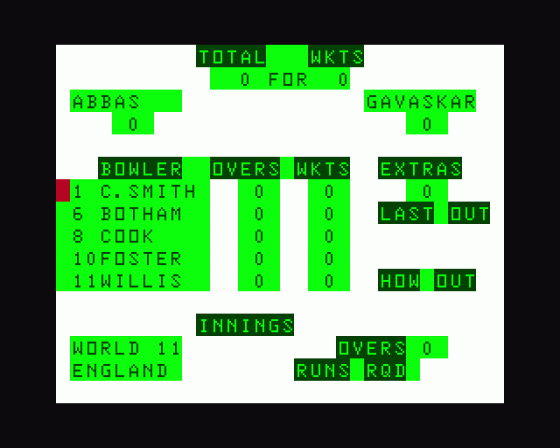
In the game Beam Buggy, you control a light cycle rushing around the screen leaving a trail and making 90 degree turns like Automan. The object is to make the computer bike cut one of the tracks while avoiding them yourself and this isn't too difficult. Prachnid is similar to Droid and other robot games where you have to avoid little creatures that fire at you. If you can avoid them you climb on board the transporter and are back on the selector board again.
Force Field puts you in a cylinder at the bottom of the screen with the roof gradually descending on your head. If you can shoot a hole through it, you can escape to freedom. The Maze consists of an area of walls containing your tank and the computer's vehicle. You have to shoot it three times to destroy it, while it only needs to hit you once, which seems rather unfair.
All the first round of games are reasonably easy to cope with, but on successive screens you have to defeat larger numbers of the enemy in each game, for instance three light cycles rather than one, and three tanks in the maze. This makes the whole program well balanced in terms of difficulty, as it is possible to improve your score each time. The graphics aren't amazing, and it's hardly based on an original idea, but it's well-written and can become quite addictive.
Red Meanies (Salamander)

Salamander has produced a wide range of rather strange games in the past, from the Dan Diamond Trilogy to The Cricklewood Incident, so I was surprised when a version of Pac-Man arrived this month. However, very little is ever what it appears from Brighton software houses, and the cassette of Red Meanies is no exception.
According to the accompanying blurb, you are a member of the great star-faring race of Intergalaclic Cheese-snufflers who happen to be trapped in a maze of cheese. No bad fate, you might think - until you discover that the maze is inhabited by Red Meanies who rather enjoy the taste of Cheesesnufflers (that is, you). The red dots lying on the floor of the maze are ordinary cheeses, but occasionally you will find green ones that are so strong they turn the Red Meanies into Blue Loonies, who are easy to catch and eat. Unfortunately this increases the number of Red Meanies, but life never was supposed to be that simple.
The screen shows how many cheeses you have consumed and how many lives you have left, as well as a view of the maze. In this version, however, you never see the maze from the air, always from ground level. For those of you who have ever wondered how it felt to be a white rat racing through the maze alleys in some laboratory, then play this game. The graphics are very fast, and you use the keyboard to turn or go forward. The keyscan routine is also very efficient, and you can hold the forward key down at the same time as you turn left and right. I think that Phantom Slayer is still my favourite Dragon maze game, but Red Meanies is well worth considering.
Crash (Microdeal)
Microdeal has produced several new titles this month, including some that continue themes from previous games. Crash is one of these, and stars Mario, from The King, who doesn't get on with gorillas quite as well as David Attenborough does. Flying across the Amazonian basin, he has been forced to parachute into the jungle and must now try to reach safety. The initial display lets you choose the background colour, and then has a rather long piece of introductory music as the titles are displayed. At this point, you are shown the four different screens until you press a key to start the game.
The first screen consists of two ladders on each side of the screen. The object is to swing across on a rope, climb a ladder, swing back, climb another ladder and so on, until you arrive at the top of the screen. On the way Mario needs to collect various objects lying on ledges before he is allowed to proceed to the next screen. Impeding his progress are spiders that drop from the roof and bounce up and down on their threads, and some nasty snails that wriggle around as they, too, descend about his ears.
Screen two has evil frogs to jump over, and screen three forces him to use his parachute again as he attempts to leap from a tall tree into a boat. Screen four introduces monkeys who must be avoided at all costs before Mario is back at the start.
I found the spiders reasonably easy to escape, but the snails are particularly aggressive. All in all, a good game to play, and one with quite a bit of originality, though probably not as addictive as The King, Cuthbert In The Jungle, or my favourite, Dragon Data's Junior's Revenge.
Mentioning Cuthbert reminds me of an enjoyable day I had at Earl's Court recently, where I actually had a conversation with Cuthbert and joined his club. Unfortunately the conversation had to be conducted via a TV screen, but was interesting none the less, and it was good to see that the lad had escaped from the clutches of the Moronians once again.
Cuthbert In Space (Microdeal)
His latest exploits are recorded in Cuthbert In Space, which sends him right to the Moronian Solar System to plunder their planets for fuel pods. The display shows you landing on each planet in turn, and leaving the mother ship in a highly manoeuvrabie scout craft. You can control the vessel round the screen to the different locations of the pods. The Moronians send out their police force to prevent you from achieving your aim but you can shoot at them, provided you are facing in the right direction.
By collecting all the fuel pods from one planet you are allowed to try to capture looted goods that descend from the top of the screen. I didn't find this as much fun to play as some of Cuthbert's earlier adventures, and I found it a difficult game to master. This is probably a point in its favour, however, as anyone buying the game would not like to spend £8 only to find there was no challenge.
3D Seiddab Attack (Hewson Consultants)
A couple of months ago, I reviewed a game from Hewson Consultants called 3D Space Wars, which showed you the view from the flight deck of a space craft under attack. I was very impressed with the graphics in this game and was interested to see two other titles come my way this month, 3D Seiddab Attack and 3D Lunattack.
In 3D Seiddab Attack, you control three drone tanks as they trundle slowly along long canyons of buildings. All the time you are being attacked by enemy craft which swoop out of the sky at you. You are given warning of their approach on a radar screen at the bottom of the display, and you can also see the front of the tank. This is very useful, as each time you are hit, a piece of the front breaks off in an alarming fashion, and eventually the engine shuts down and the next drone takes over. If you liked 3D Wars then you'll enjoy this game, although the lumbering speed of the tank tends to be frustrating as you try to swing the nose around to fire at the enemy craft. The displays are very clear and the animation excellent. Definitely worth a look.
3D Lunattack (Hewson Consultants)
3D Lunattack uses the same technique to display enemy ships moving towards you, but this time you are piloting a Z5 Luna Hover Fighter attempting to penetrate three rings of defence before it can attack and destroy the Seiddab Base. This is a fairly complicated game and one that needs quite a lot of practice before the inner defence rings can be reached. The visual effect of flying over the lunar surface is very realistic, complete with a partially darkened earth hanging in the sky. There are enemy tanks and fighters to contend with, as well as a mountainous landscape to negotiate.
There is an instrument panel at the bottom of the screen that gives you warning of fighters approaching and the direction of the base. There are also messages that tell you if tanks are near and one curious one that must be a weather report for Yorkshire, as it keeps reading "Hull overheating" (!?).
The sound effects are quite exciting and the whole game is another success from Hewson Consultants. Although the formula has worked well so far, I'm not sure if Hewson could get away with any more 3D programs, as there is a certain amount of similarity between all three. As a final program, it could use the excellent 3D display to good effect in a re-write of its flight simulator.
Sporting Decathlon (Paramount)
Sporting Decathlon is the title of a game from a new name in Dragon programs, Paramount Software. This game has appeared at the right time to cash in on Olympic fever this summer, but any budding Daley Thompsons would probably have more fun outdoors than playing this game. The idea is fine - 10 events in which you control a miniature athlete who fights his/her way to gold, but after a few plays, it begins to pall.
The graphics are quite good, with a little figure running from left to right across the screen, and the amount of energy available during flat races is shown as a line across the bottom of the display, as is the distance remaining. The winning technique seems to be discovering how to use up almost all your energy without actually collapsing before the finishing line. The throwing events seem to be won by luck more than by judgement - you have to try to release the joystick button while a flashing strength line is at its greatest. The jumping events are similar, though more difficult. I still haven't managed the correct technique of doing the pole-vault.
At the end you get the adulation of the crowd at the medal ceremony accompanied by the strains of the Chariots of Fire theme. Although I don't think this is the sort of program to have lasting appeal, it might have some attraction to those of you who prefer their exercise in front of a TV screen.
The Chocolate Factory (Minits)
Another new company name is that of Minits, and the name of the game is The Chocolate Factory. From the title, you might expect a thrilling adventure game with Charlie, the Oompa-Loompas, and all the other characters from Roald Dahl's book. However, this is simply a simulation game in which from two to six players own chocolate factories and try to make their fortune. It doesn't sound very inspiring, and I'm afraid it didn't strike me as being the sort of program I'd rush out and buy. It appears to be very well written, and you can choose to have rampant inflation, strikes, heatwaves and other problems taking place just to liven up the game, but it just didn't seem to have any real excitement. I suppose if you have fantasies about being a factory owner or a millionaire, then it might appeal to you, but it's not one for me.
Tim Love's Cricket (Peaksoft)
Another simulation that uses far more of the Dragon's abilities is Tim Love's Cricket from Peaksoft, For some reason, computers and cricket both produce the same unkind remarks from some females of my acquaintance - something about their both being traditional male activities. Whereas more girls are enjoying computers nowadays, the same cannot really be said for cricket, and I imagine that you'd have to be quite keen on the game to enjoy this cassette. However, it might appeal to those who want to know more about the magical sound of leather on willow, and it does give you a very full version of the real game (the only serious omission seems to be the beer tent).
At the start there is a screen display of what looks like the Oval, complete with John Arlott's favourite view, "the gasometer sinking slowly in the distance". After this you can enter your standard: test match, county or village green. Even if you select the last category the match is between England and a World XI, although you can name your own team, and the choice of category merely changes the speed of bowling. You can play against someone else or try your best against the computer. There are many fine details in this game and you need careful control of the joysticks to avoid no-ball calls.
There is a view from the side of the wicket as well as one from above, and the figures are very lifelike. The angle of the bat, its height and the position of the batsman are all variable, as is the control of the ball when its your turn to bowl. Immediately the batsman has hit the ball, the display changes to a birds-eye view of the whole pitch. If you are fielding, you press the fire button until the fielder closest to the ball begins to flash, then you can control his movements as he chases the ball. This game takes a long time to perfect, but if you are interested in this noble sport, you will undoubtedly get hours of enjoyment from Peaksoft's Cricket.
Pengon (Microdeal)
The last cassette I have looked at is an ideal game to cool you down in the middle of summer. Pengon from Microdeal, is a Dragon version of the arcade game where you control a little penguin who pushes large blocks of ice around the screen. You can select the skill level from one to five and a maze of blocks appears on the display. Some creatures who go by the unlikely name of Sea-nasties appear and try to munch you. Your only defence is to crush creatures between the blocks by pushing them. Eventually you kill all the creatures on the screen, and it fills up with fresh blocks. There are three special blocks also on the screen that cannot be crushed, but will add 1,000 points to your score if you manage to push them together. A rather simple game, but with addictive potential.
In Conclusion
After a month in which Dragon Data has gone under yet again, it is reassuring to see that the selection of software grows in both quality and quantity all the time, and that Dragon owners are not being neglected by the games writers. One hopes it will continue to carry on in this way.

